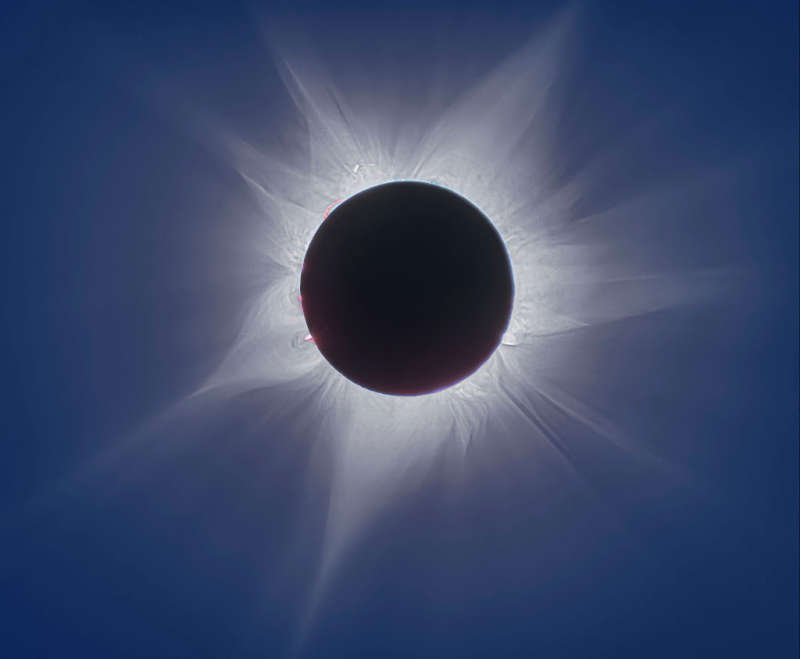Credit & Copyright: Fred Espenak
Explanation:
Along
a narrow path
that mostly avoided landfall,
the shadow of the
New Moon raced
across planet Earth's southern hemisphere
on April 20 to create a rare
annular-total or
hybrid solar eclipse.
From the Indian Ocean off the coast of western Australia,
ship-borne eclipse chasers were able to witness 62 seconds
of totality though
while anchored near the centerline of the total eclipse track.
This ship-borne image of the eclipse captures
the active Sun's magnificent outer atmosphere or
solar corona
streaming into space.
A composite of 11 exposures ranging from 1/2000 to 1/2 second,
it records an extended range of brightness
to follow details of the corona not quite visible to the eye during
the total eclipse phase.
Of course
eclipses
tend to come in pairs.
On May 5, the
next Full Moon
will just miss the dark inner part of Earth's shadow
in a penumbral lunar eclipse.
Total Solar Eclipse of 2023 April Gallery:
Notable
Submissions to APOD
1999 2000 2001 2002 2003 2004 2005 2006 2007 2008 2009 2010 2011 2012 2013 2014 2015 2016 2017 2018 2019 2020 2021 2022 2023 2024 2025 |
Январь Февраль Март Апрель Май Июнь Июль Август Сентябрь Октябрь Ноябрь Декабрь |
NASA Web Site Statements, Warnings, and Disclaimers
NASA Official: Jay Norris. Specific rights apply.
A service of: LHEA at NASA / GSFC
& Michigan Tech. U.
|
Публикации с ключевыми словами:
solar eclipse - Солнечное затмение
Публикации со словами: solar eclipse - Солнечное затмение | |
См. также:
Все публикации на ту же тему >> | |
